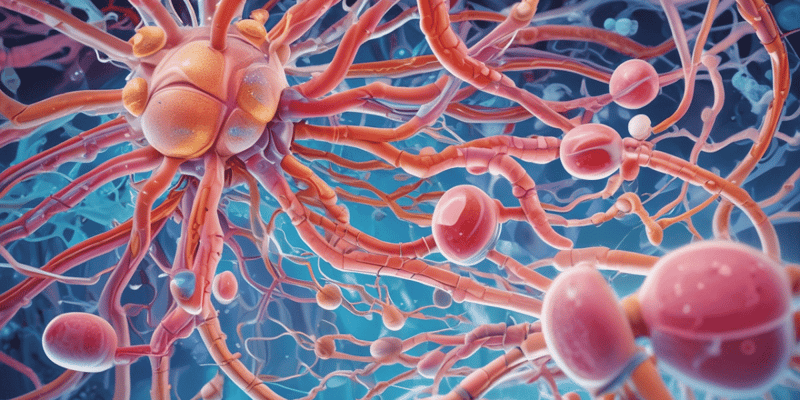Podcast Beta
Questions and Answers
Non-steroidal anti-inflammatory drugs (NSAIDs) are capable of relieving high-intensity pain.
False
The use of opioid analgesic drugs is associated with euphoria and addiction.
True
Opioid (narcotic) analgesic drugs act on both cortical and subcortical regions of the brain.
True
Central analgesics are drugs that impair consciousness and other sensations while relieving pain.
Signup and view all the answers
Peripheral analgesics include physical protectives, local and surface anesthetics, and counter-irritants.
Signup and view all the answers
Match the following analgesic drug classifications with their characteristics:
Signup and view all the answers
Match the following types of analgesics with their primary mode of action:
Signup and view all the answers
Match the following characteristics with the corresponding analgesic drug classification:
Signup and view all the answers
Match the following analgesic drug classifications with their impact on consciousness:
Signup and view all the answers
Match the following analgesic drug classifications with their addictive potential:
Signup and view all the answers
Match the following characteristics with the corresponding type of analgesic drug: Relieve low intensity pain, act subcortical on thalamus, no euphoria or drowsiness, and non-addictive.
Signup and view all the answers
Match the following actions with the corresponding analgesic drug classification: Act cortical and subcortical, produce euphoria and addiction.
Signup and view all the answers
Match the following analgesic drug classifications with their corresponding impact: Relieve any type of pain except itching.
Signup and view all the answers
Match the following drug classifications with their corresponding mode of action: Include physical protectives, local & surface anaesthetics, and counter-irritants.
Signup and view all the answers
Match the following types of analgesic drugs with their corresponding characteristics: Include physical protectives, local & surface anaesthetics, and counter-irritants.
Signup and view all the answers




